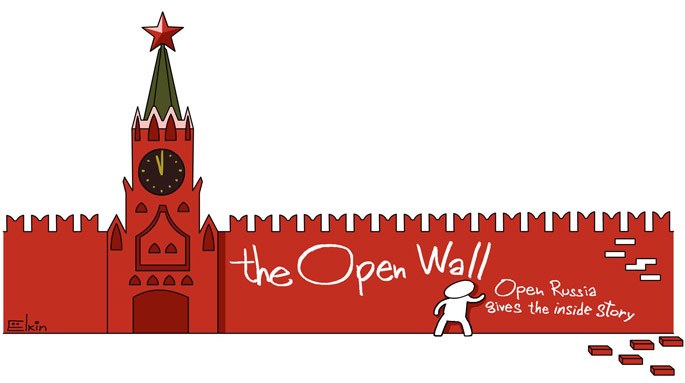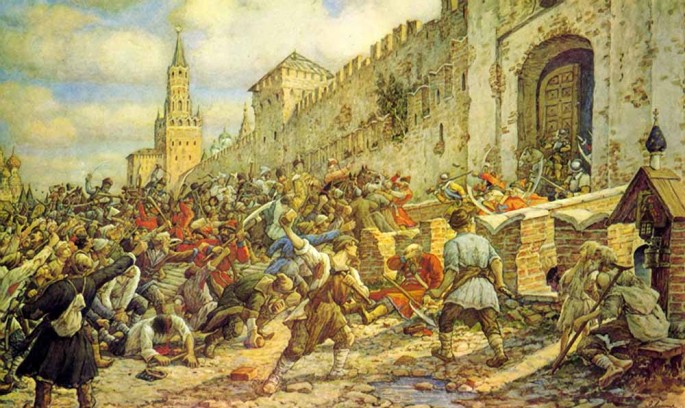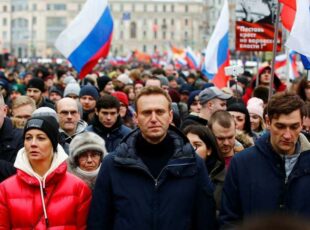The Salt Riot

The Salt Riot
The government has announced a ban on the import of salt. And people are not happy – shades of 1648 …

Picture the scene. Putin’s imperial motorcade is making its way through central Moscow. The street is suddenly cut off by protesters demonstrating against falling living standards and the recent embargo on imported salt. Some run up to the president’s car and attempt to hand him a petition demanding the creation of a new parliament – one that would genuinely represent the people’s interests.
Shaken – unaccustomed to the nearness of his subjects – Putin imperiously orders the troublemakers to be dispersed. Some of the demonstrators are quickly drawn into violent clashes with the president’s security detail, pelting them with sticks and rocks. Retreating to the safety of the Kremlin, the country’s leaders spend the rest of that day doing their utmost to calm the crowd. But the following afternoon sees events take a dramatic turn: protesters break into the Kremlin and attempt to hand Putin a new petition – only for it to be torn to shreds before their very eyes by the president’s staff. The very next day, the majority of the Moscow police take the side of the incipient insurgency. Deputies’ houses are set ablaze, ministry buildings ruined. Vehicles with flashers are apprehended, officials captured and hanged. The governor of the city is thrown to the wolves by his boss, whose demands for absolute loyalty from his underlings don’t mean that he has to do the same; the crowd “cuggeled him so black and blew and with axes they cut him asunder like a fish, the pieces they let lye naked here and there.” The rebels burn between 15,000 and 24,000 houses; between 1700 and 2000 people die in the riot.
This, of course, is a modernised retelling of the Moscow uprising of 1648, sometimes known as the Salt Riot. The seventeenth-century protesters demanded a Zemsky Sobor (an “Assembly of the Land”), clashed with streltsy (guardsmen or musketeers), and set fire to the houses of boyars, executing many of them; other than that, the details in the paragraphs above are accurate. So those who claim that Russia has no tradition of pursuing democracy from below aren’t quite correct. It absolutely does: a year before Charles I was beheaded in London, embezzlers of public funds were being lynched on Red Square by crowds demanding popular representation. But that’s another story.
The immediate catalyst for the Moscow uprising was an increased salt tax. The state coffers were running dry, and the authorities under Alexei I (father of Peter the Great) were scrabbling to replenish the treasury by imposing new levies on anything and everything. The salt tax fell on the poorer sections of society, and the situation was aggravated by the fact that so many members of the elite found ways to evade the tax. This bred even more resentment, mixed with anger at widespread corruption.
The irony of the Moscow uprising is that, far from producing a government more responsive to the needs of the people, it instead led to the codifying of a set of laws that remained in use for centuries. Far from making better the lives of the serfs, it institutionalised serfdom. And, if you like your irony heavily salted, you will appreciate the fact that these laws were distributed thoughout the nation using a newly installed printing press – the first step in the Kremlin’s control of the media.
What, you might ask, does this have to do with today’s situation? After all, you can pick up ordinary table salt from any grocery store, and it won’t even break the bank. Still, there is a connection. Last week, the Russian government unilaterally broadened the scope of its so-called counter-sanctions. For reasons unknown to anyone, the trade embargo will now encompass salt of both household and industrial varieties. From November 1, imports of salt from the United States, European Union, Australia, Albania, Iceland, Liechtenstein, Norway, Ukraine and Montenegro will be banned in Russia.
Can the country cope without Liechtensteinian salt? Probably, just about. What about Ukrainian salt, then? Now, that’s a different proposition entirely. According to statistics, Russians consume more than 1.5 million tonnes of salt a year – a quarter of which comes from Ukraine. Overall, 50%-65% of Russia’s salt is imported.
It’s not entirely clear where the Russian government now intends to source hundreds of thousands of tonnes of domestic salt. Russian factories – concentrated primarily in the Astrakhan region – are producing whatever they can produce; and they’re more or less at full capacity.
The rationale behind this exercise is similarly unfathomable. No new sanctions have been imposed on Russia by Western countries (and certainly not by Montenegro!). It frankly looks like protectionism in the guise of counter-sanctions – with Russia’s salt retailers the beneficiaries. But, protectionism or no protectionism, the authorities are going to have to source the salt from somewhere. If they fail to do so, and if they fail to reassure the public, we can expect panic-buying and empty supermarket shelves before too long.
Of course, none of this is likely to catalyse an uprising (and there doesn’t seem to be much prospect of one generally). It’s more of a sad joke, really – gallows humour.



